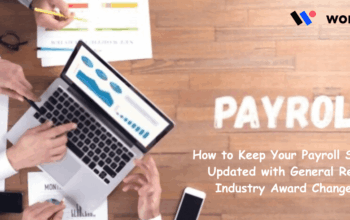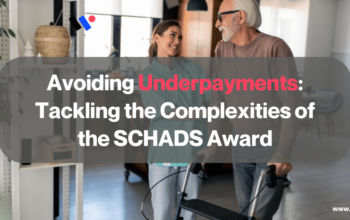Broken shifts consist of multiple work periods within a single day, separated by unpaid breaks. In this article, we will explain the regulations regarding scheduling broken shifts and how to accurately compensate your employees for them.
What is a broken shift?
A broken shift refers to a type of work schedule where an employee’s working hours are divided into multiple periods throughout a single day, with unpaid breaks in between. These breaks are separate from the regular unpaid meal breaks. Broken shifts are commonly encountered in industries such as disability services, home care, aged care, and the community services sector.
It is important to note that broken shifts are sometimes overlooked or not adequately addressed within the SCHADS (Social, Community, Home Care and Disability Services Industry) Award, which is an industrial award that sets out the minimum terms and conditions of employment for workers in the aforementioned sectors. Therefore, employers and employees need to be aware of the rules and regulations surrounding broken shifts to ensure proper scheduling and appropriate payment for these shifts.
What are the specific broken shift rules outlined in industry awards?
The specific rules regarding broken shifts can vary depending on the industry award and sector. However, here are some general examples of broken shift rules that may be addressed:
- Maximum Span of a Broken Shift: Industry awards may specify the maximum duration or spread of a broken shift. For example, the Cleaning Services Award may allow a maximum spread of 13 hours between two work periods within a broken shift.
- Minimum Break Between Work Periods: Awards may establish the minimum duration of breaks required between work periods within a broken shift. The exact duration can vary between awards. For instance, the SCHADS award does not mandate a minimum break time between work periods, while other awards may require specific break durations.
- Agreement for Broken Shifts: Some awards may require employers to seek employees’ agreement before scheduling them for a broken shift. The conditions for obtaining this agreement can differ. In the case of the SCHADS award, an employee’s agreement is required for a broken shift with two breaks, either before the shift starts or as part of an agreed regular pattern of work.
- Payment and Allowances: Industry awards often outline how employees should be compensated for working broken shifts. This may include provisions for additional allowances or penalties. The specific payment details can vary depending on the award and sector.
Notably, each industry award establishes its own regulations for broken shifts; therefore it is crucial to refer to the applicable award within your specific industry to ascertain the precise rules and conditions governing such shifts.
What is broken shift allowance?
A broken shift allowance is an additional payment provided to employees who work shifts that are divided into multiple periods with unpaid breaks (excluding regular meal breaks). This allowance aims to compensate employees for the inconvenience and disruption caused by stopping and restarting work within a single day. The specific amount of the broken shift allowance varies depending on the industry and is usually defined in the relevant industry award or agreement. It is typically calculated as a percentage of the standard rate or minimum wage for the employee’s level of classification.
For instance, under the SCHADS Award, the broken shift allowance is determined based on the number of breaks within a shift. Similarly, other industry awards such as the Children’s Services Award, Cleaning Services Award, Hospitality Industry (General) Award, and Fitness Industry Award outline their own specific allowances for broken shifts.
It’s important to note that the broken shift allowance forms part of an employee’s gross wages and is subject to tax withholding by their employer.
How is a broken shift paid?
When paying employees for a broken shift, employers must adhere to the regulations set out in the relevant award. Generally, employees should be compensated for the hours worked or a minimum payment period, whichever is greater. Additionally, employers may need to provide allowances such as weekend and public holiday penalty rates, overtime pay, shift allowances, and casual loading for uncertain schedules.
For instance, under the SCHADS award, employees must be paid for the hours worked in a broken shift or the minimum payment period, with a minimum payment period of 2 hours for part-time and casual workers.
This means employees are entitled to at least 2 hours’ pay for each work period within a broken shift, even if they work fewer hours. The minimum payment period applies to all work periods, including breaks, which are considered as time worked. If an employee works more than a 12-hour span in a single broken shift, they may be eligible for double their minimum hourly wage for the excess time.
It’s crucial to consult the specific award relevant to your industry for accurate information on how broken shifts should be compensated.
How can Workstem assist you?
Simplify your payroll process and ensure accurate pay rates with Workstem’s automated payroll system. Our pre-built modern award interpretation software covers 122+ awards and 34 EBAs, and keeps you up-to-date with penalty rates and other award entitlements.
Choose between our Standard and Advanced plans, and enjoy a range of benefits such as Fair Work compliance, an employee self-service App, and customised rule set.
Book a free demo with our payroll experts. Experience the efficiency and accuracy of Workstem today!
Read More:
Updated SCHADS Award Pay Rates Guide
Understanding Pay Point Progression in the SCHADS Award








